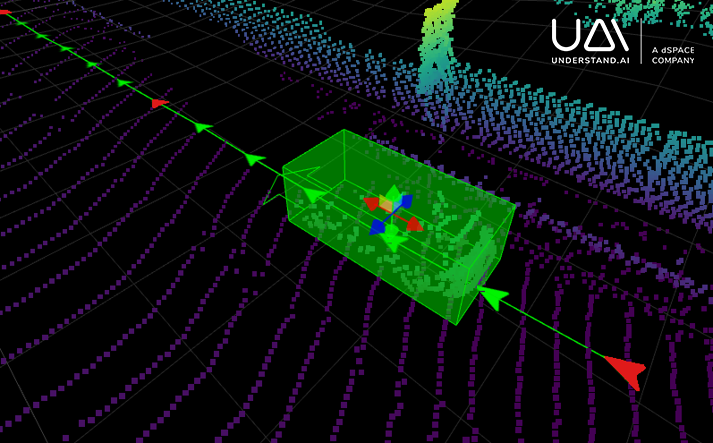Building advanced driver assistance systems (ADAS) requires more than just powerful algorithms and cutting-edge sensors - it requires high-quality, well-structured data. One of the biggest challenges? Efficiently annotating large amounts of sensor data. That is where interpolation comes in at understand.ai. This simple yet powerful technique helps fill in the gaps between data points, making it easier to automate parts of the annotation process. The result: faster labeling, better consistency, and higher cost-efficiency.
What is Interpolation?
Interpolation is a mathematical and statistical method used to estimate unknown values within the range of known data points. In the context of ADAS, interpolation plays a critical role in processing sensor data and enhancing dataset quality, especially when building large-scale annotated datasets.
For example:
- Aligning sensor data: Imagine your camera captures images every 33 milliseconds, but your radar updates every 100 milliseconds. Interpolation helps you estimate what the radar “saw” in between, so all your sensor data lines up correctly.
- Reconstructing object motion: If a pedestrian is detected in frame 1 and again in frame 5, interpolation can estimate their position in frames 2, 3, and 4 - creating a smooth, continuous trajectory.
- Filling in annotations: Instead of manually labeling every frame in a clip, you can label just a few keyframes. Interpolation fills in the rest, saving time and ensuring consistent labels across frames.
The result? Cleaner and more cost-effective datasets that are critical for real-world ADAS applications.
Interpolation at Work: Faster, Smarter Annotation
At understand.ai, we are redefining how high-quality datasets are created by leveraging smart interpolation techniques. Our approach dramatically reduces the manual workload involved in annotating large volumes of data, without sacrificing accuracy or consistency. Depending on the specific use case and data, interpolation can save up to 75% of manual labeling efforts.

The Power of Interpolation
Rather than manually labeling every single frame in a dataset, we strategically annotate only a subset of frames known as keyframes (red arrows in the picture above). These are carefully selected based on project-specific requirements, sensor quality, and the nature of the data. From there, we use advanced interpolation methods to automatically generate annotations for the frames in between.
This process is highly configurable. We tailor the interpolation setup to each project by:
- Choosing the optimal frequency for keyframe annotation
- Selecting the most suitable interpolation strategy, often incorporating proprietary techniques we have developed to better handle complex motion and edge cases
- Defining post-processing steps to refine the results
Two-Pass Interpolation Annotation Pipeline
Our annotation pipeline is designed combining manual precision with smart automation. Here’s how it works:
1. Keyframe Annotation: We begin by manually labeling keyframes with all relevant objects and attributes, following
the project specifications.
2. First Interpolation Pass: Between each pair of keyframes, we interpolate the middle frame. This frame is then manually reviewed and corrected if necessary.
3. Second Interpolation Pass: Using the current set of annotated frames (original keyframes + reviewed middle frames), we can interpolate the remaining frames in each sequence.
4. Final Quality Check: Our quality assurance team performs a final review of the interpolated annotations. Since most frames are derived from high quality data, this step is significantly faster than annotating from scratch, while still ensuring ground-truth level accuracy.
Efficiency Without Compromise
By adopting an interpolation strategy at 8Hz, we only need to manually annotate about 13% of the frames. This translates to substantial cost savings and faster delivery times, all while maintaining the high ground truth quality our clients expect.
In a world where data is everything, interpolation is the quiet force driving smarter, faster, and more scalable annotation. At understand.ai, it’s not just a technique, it’s a foundation for efficient, high-quality dataset creation.